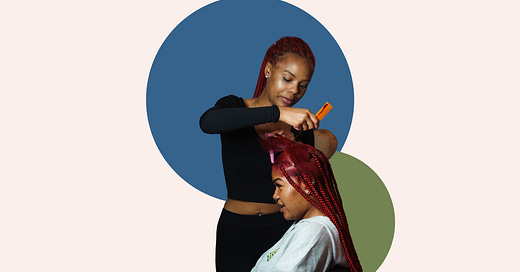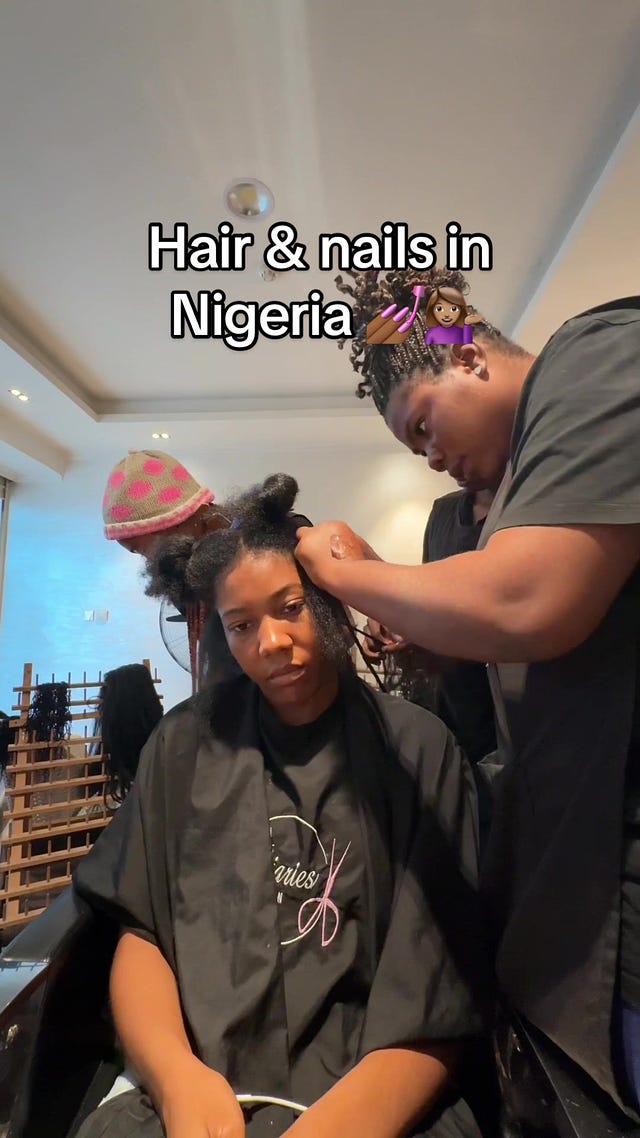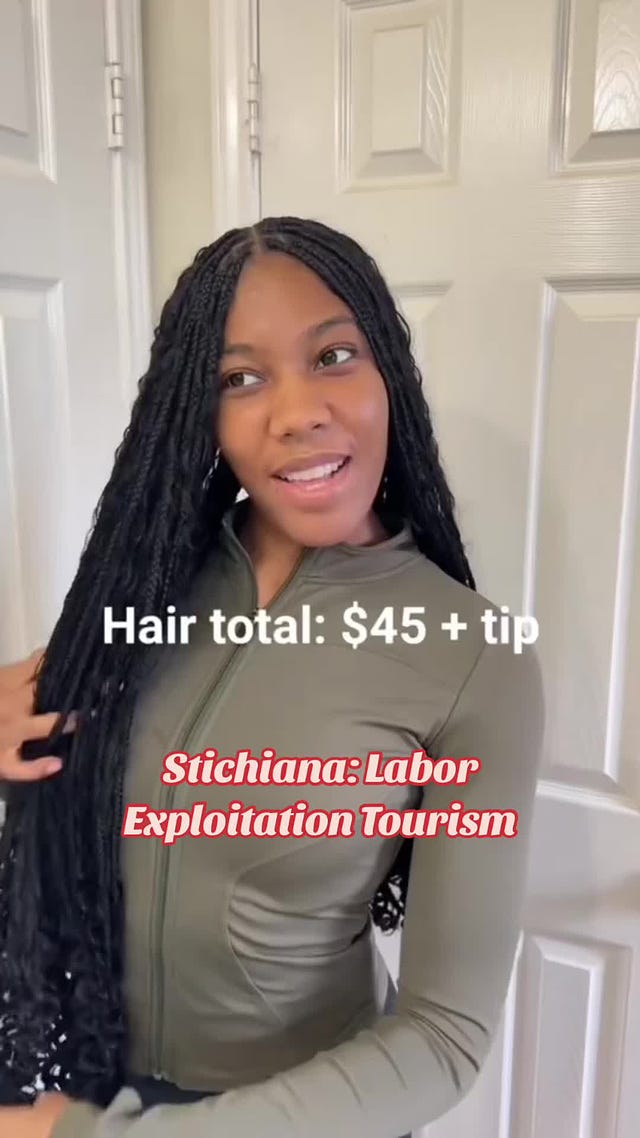In today’s post:
Q (not) A Beauty & Pop Culture Questions
The Full Beat Is It Giving Exploitation?: Perspectives on Beauty Tourism
What can Jools’ demure trend tell us about femininity? Sarah Radin argues that rapidly accelerating beauty trends, like “demure,” can tell us a lot about the way that femininity is understood by the masses. For example, the “demure” aesthetic may be read as a “playful reclamation of oppressive patriarchal standards” that seek to shape how women should present themselves in the public eye. Also, that a trans woman, “who historically doesn’t fit the beauty standards,” is its creator speaks to another incredible shift in mainstream representation of femininity.
How exactly does the Sephora Accelerate Program support emerging BIPOC+ entrepreneurs? They provide founders with an advisory team, including a financial advisor and mentor. Share the details with any beauty founders who may be interested.
Is Dimepiece’s Substack a perfect ten? I can’t say because according to their founder, they’ve not had a newsletter until now. Brynn Waller has decided to bring the “femme-forward resource for anyone who might be into watches” to Substack just this week and I'm excited.
Is It Giving Exploitation?: Perspectives on Beauty Tourism
In a viral TikTok, Crystal takes her followers along to a braiding appointment. Unlike similar videos, we follow her through an airport and into a braiding chair in Lagos. She tells us that it was significantly cheaper for her to fly to Lagos for her hair appointment than to have her hair done stateside.
At one point there are four women braiding her hair simultaneously, and two more enter the frame to give her a $20 gel manicure and pedicure. The total for her waist length boho braids? $45 + An undisclosed tip.
Crystal does not disclose the amount she spent on her flight so it is not possible to compare the cost of her braids and flight with average braid cost in the U.S. And, it is clear that this video was intended to generate some controversy. It being was cheaper to fly to Lagos for the appointment, is a bit tongue in cheek.
Most of the comments
asked about her flight cost
wondered what state she lives in to determine average cost of braids there
applaud her use of “girl math”
In a stitch, another creator offers a grave prediction that this kind of practice is the next wave of tourism. Joy warns against traveling to countries with even fewer labor protections than the U.S. to further “devalue the labor provided for cheap.” Joy’s comment section tells a different story about the ethical implications of Beauty Tourism.
 Tiktok failed to load.
Tiktok failed to load.Enable 3rd party cookies or use another browser
What is Beauty Tourism?
The practice of traveling abroad with the specific intention of getting beauty treatments in another country for a lower cost than one’s home country.
Many of us would likely think of veneers, BBLs, or hairline surgeries when presented with this definition. This is a reasonable assumption as some research suggests that In 2023, cosmetic surgery accounted for about 25% of medical tourism. Ethical, or responsible tourism, encourages tourists to “preserves local culture, maintains the environment for future generations, and sets a positive example for others.”
One common example of responsible tourism includes supporting local business owners where we can. And, if one is visiting braiders and paying their listed rate, isn't this act in support of responsible travel? In her comments, Joy’s viewers protest the practice of flying in for braids because prices are rising. If this sounds familiar, it's because here in the U.S. Black women regularly express that braids are too expensive. Stylists also try to stress that inflation and labor costs leave them with no choice except to raise prices.
The cycle is, braids are too expensive in the states > consumers may travel internationally for appointments > residents get priced out. While this is probably quite frustrating for local residents, is it unethical? Joy’s point, that these acts exploit women who are not covered by labor protections demands more consideration. Especially because a similar lack of protections exists within our own borders.
In her article about West African braiders living in the U.S., Houreidja Tall captures the precariousness of their working conditions, “She receives no health insurance through her job, no benefits, and has no retirement package. She has no paid time off. When the work stops, the money stops.” Joy and Houreidja illuminate that we must critically examine our responsibilities to Black stylists in the diaspora, even at the expense of our beauty desires.
If one of the tenants of ethical tourism is to support local businesses, which we want to honor, what about leaving places better than we found them? Does participating in a practice that prices out locals and supports women’s physical and labor devaluation truly leave the community in a better position?
In “Optimal Beauty Standards” I argued that despite growing economic hardships,
“...beauty is still a requirement, so to meet its standard under these uniquely devastating conditions, we turn to DIY. This means that the demands of beauty do not ever stop, they require the participant to optimize herself so that she might meet them.”
I did not anticipate Beauty Tourism, wherein consumers access beauty services, not by statewide providers or their own hands, but women in other countries. While this may not be especially common practice yet, its implications are already visible.






Thank you for sharing this post! Beauty tourism, especially in Africa, is something I’m incredibly passionate about. And, I think this conversation is more nuanced than it appears. While some may consider this behavior to be exploitative, I hesitate to use that term (though I think the TikTok creator was trying to rage bait the audience just for views). "Exploitation" carries a negative connotation, suggesting an unethical or unjust attempt to take advantage of a situation. To me, this is more about arbitrage—taking advantage of price disparities in a way that isn’t inherently unethical and doesn’t necessarily cause harm.
Speaking from my own personal experience, earlier this year, I traveled to Nigeria to get my microlocs installed. The cost of getting them done in the U.S. was far higher than I was willing to pay, and even after factoring in the cost of my flight and the installation itself, it ended up being more affordable than having it done back home. It also gave me a chance to visit family and explore the city while also taking care of something I needed.
I think it’s important to recognize that in some of these countries, there’s an oversupply of low-skilled labor (such as hairstyling) that doesn’t always meet local demand. This imbalance can actually make beauty tourism a source of economic opportunity, helping people earn a living wage that they might not otherwise have access to. Yes, the services are cheaper due to differences in currency value, but they still pay a fair, market-driven rate for the local economy. The real problem comes when services are priced at U.S. rates, which can create problems for locals by making what was once affordable suddenly out of reach.
When done thoughtfully, this type of tourism can create employment opportunities abroad, while also contributing to the economic development of the continent in a positive and sustainable manner. I think it's time we broaden the conversation. With so many people traveling to places like Asia, Europe, and South America for various types of beauty or medical tourism, it makes me wonder: why shouldn’t Africa benefit from this, too?